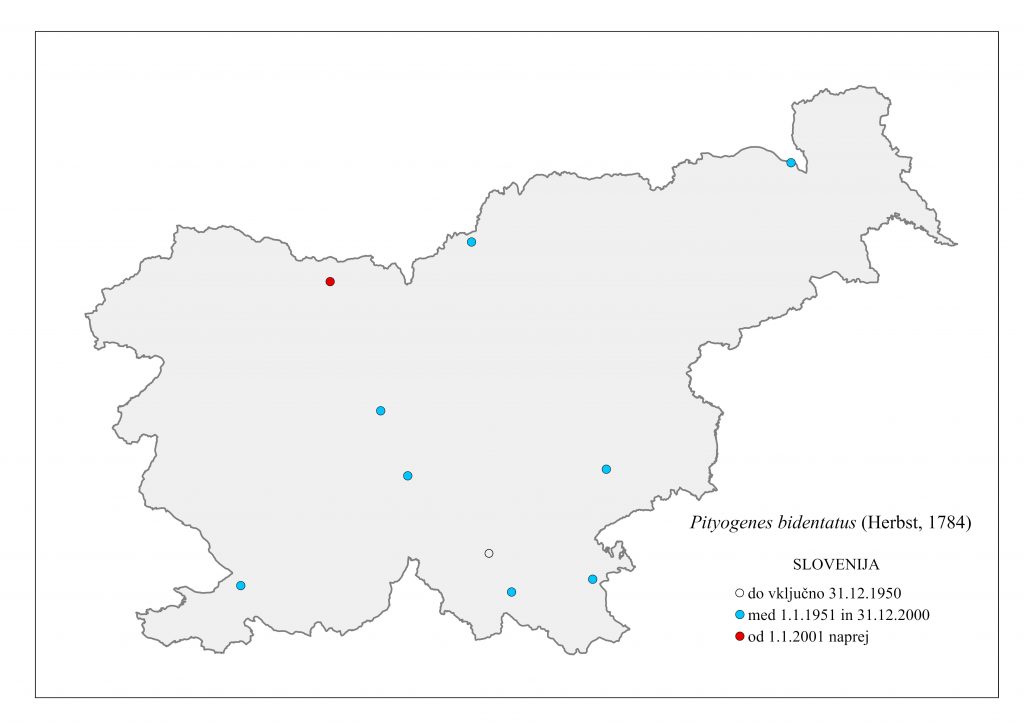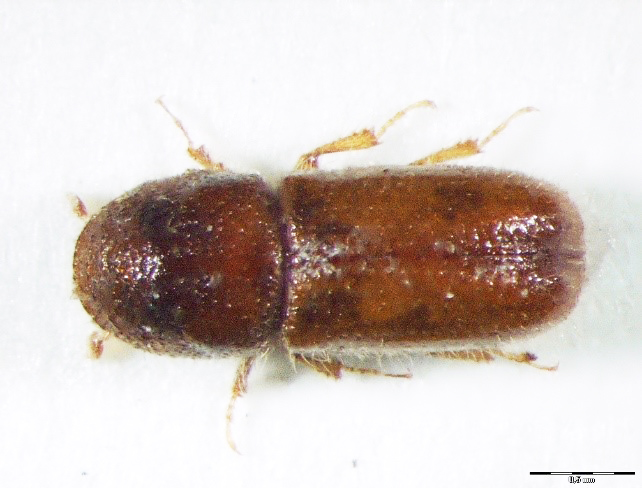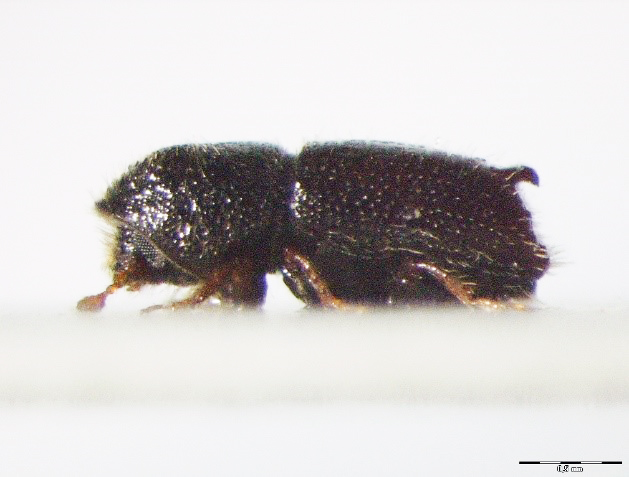30.01. Pityogenes bidentatus (Herbst, 1784)
Presence
E: AU BE BH BU BY CR CT CZ DE EN FI FR GB GE GR HU IR IT LA LT LU MC MD NL NR NT PL PT RO SK SL SP ST SV SZ UK YU
A: ES FE IS JA KZ MG TR WS
AFR
NAR
Figure 132: Pityogenes bidentatus (above: male – dorsal, lateral, below: female – dorsal, lateral) (Photo: Maja Jurc)
Older catalogs and keys – citations of name
Siegel 1866: Bostrychus bidens Fab.; Grüne 1979: Pityogenes bidentatus (Herbst, 1783); Freude, Harde, Lohse 1981: P. bidentatus Herbst (obtusus Eggers (1932)); Titovšek 1988: P. bidentatus (Herbst); Pfeffer & Knížek 1993: P. bidentatus (Herbst, 1783); Pfeffer 1995: P. bidentatus (Herbst, 1784).

Figure 133: Pityogenes bidentatus, distribution map according to historical and recent data
Ecology and presence in Slovenia
The species is present in central and northern Europe, the Caucasus, Asia Minor, North Africa, the Afrotropics and the Nearctic. Siegel (1866) states that the species was found “in Carniola only on pine trees, on fresh and fallen trunks”. After World War II, 10 sites were recorded in different parts of Slovenia (Figure 133), hosted by Pinus sylvestris, P. nigra, P. strobus, P. mugo, P. rotundata, P. sibirica, Picea abies, P. obovata and P. orientalis, very rarely Abies alba, A. nordmanniana, Larix decidua and Pseudotsuga menziesii. In Slovenia it has been found on Pinus sylvestris and P. strobus. It develops two generations annually, the first swarming in May and June, the second in July and August. They build a star-shaped tunnel system with 3-7 maternal galleries buried deeply in the sapwood. Adult length is 2.0-2.8 mm. The elytra apex is steep, grooved and deepened, with males having one downward-curved, peg-like denticle on each side of the apex. The sutural denticle, which is close to the clavate denticle, is very small or absent. Females have no denticles or humps on the elytra edge (Figure 132). It is a secondary species which may become primary under favourable conditions, when it poses a threat to young pine stands. Pheromones: Chalcogran, 1-Hexanol (Gerken 1977).




